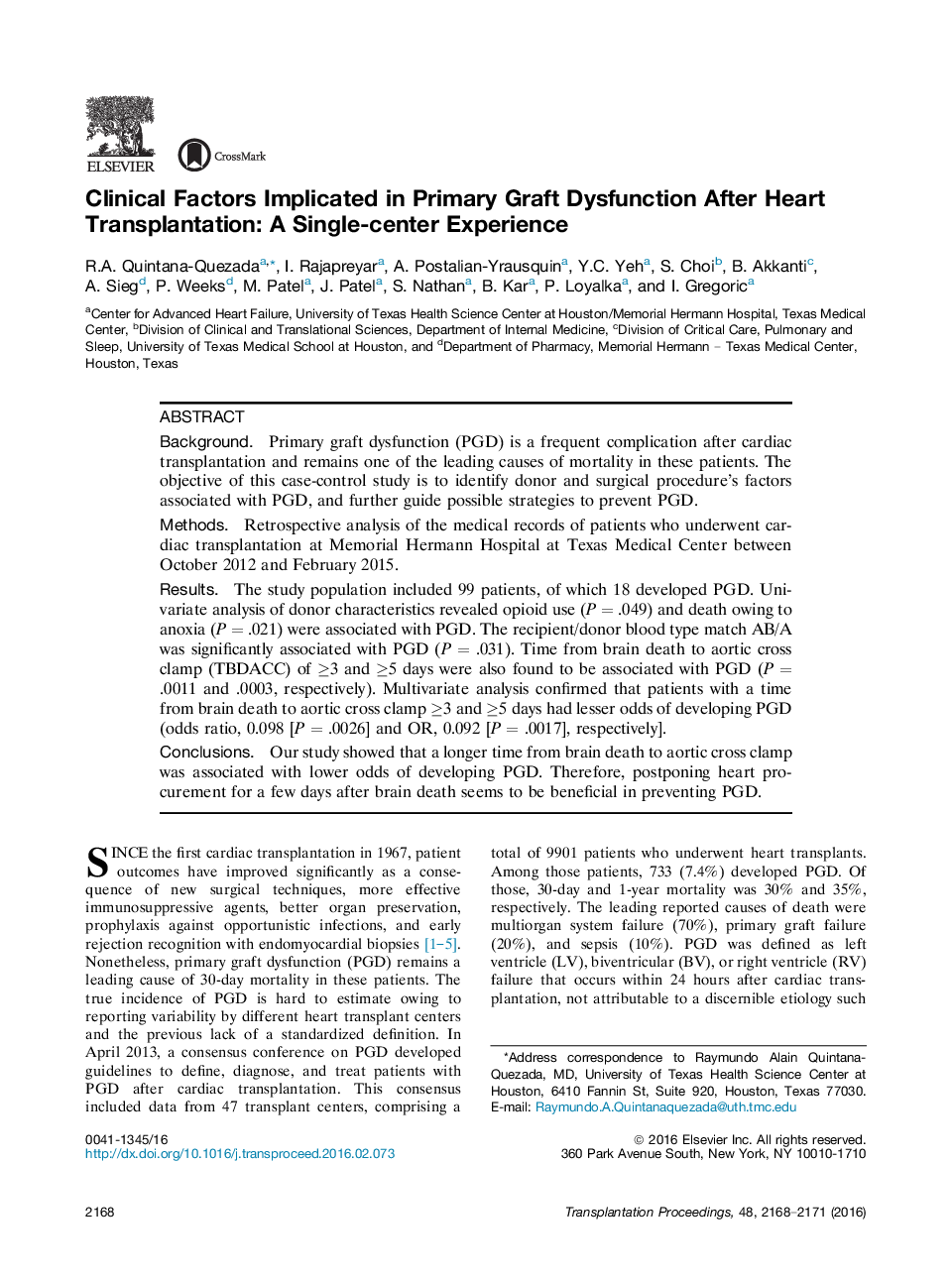| Article ID | Journal | Published Year | Pages | File Type |
|---|---|---|---|---|
| 5729165 | Transplantation Proceedings | 2016 | 4 Pages |
â¢Retrospective study including 99 patients who underwent cardiac transplantation.â¢Eighteen percent of patients developed PGD.â¢Opioid use, death from anoxia, and TBDACC were significantly associated with PGD.â¢Patients with TBDACC of â¥3 and â¥5 days had lower odds of developing PGD.
BackgroundPrimary graft dysfunction (PGD) is a frequent complication after cardiac transplantation and remains one of the leading causes of mortality in these patients. The objective of this case-control study is to identify donor and surgical procedure's factors associated with PGD, and further guide possible strategies to prevent PGD.MethodsRetrospective analysis of the medical records of patients who underwent cardiac transplantation at Memorial Hermann Hospital at Texas Medical Center between October 2012 and February 2015.ResultsThe study population included 99 patients, of which 18 developed PGD. Univariate analysis of donor characteristics revealed opioid use (P = .049) and death owing to anoxia (P = .021) were associated with PGD. The recipient/donor blood type match AB/A was significantly associated with PGD (P = .031). Time from brain death to aortic cross clamp (TBDACC) of â¥3 and â¥5 days were also found to be associated with PGD (P = .0011 and .0003, respectively). Multivariate analysis confirmed that patients with a time from brain death to aortic cross clamp â¥3 and â¥5 days had lesser odds of developing PGD (odds ratio, 0.098 [P = .0026] and OR, 0.092 [P = .0017], respectively].ConclusionsOur study showed that a longer time from brain death to aortic cross clamp was associated with lower odds of developing PGD. Therefore, postponing heart procurement for a few days after brain death seems to be beneficial in preventing PGD.
